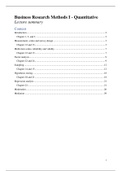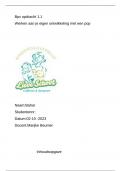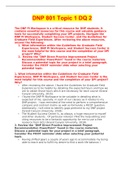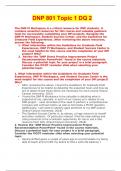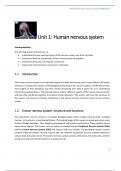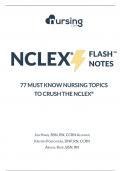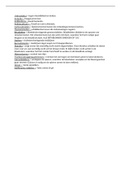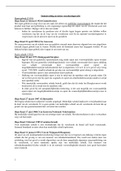Resume
BRM I Lecture Summary
- Cours
- Établissement
Complete summary of all lectures of Business Research Methods I (Quantitative) of IBA year 2 at Vrije Universiteit Amsterdam. The summary also includes notes taken during the lectures. Possible exam questions are included!! ----------- PLUS Book Summary: https://www.stuvia.nl/bundle/18801/business-...
[Montrer plus]
